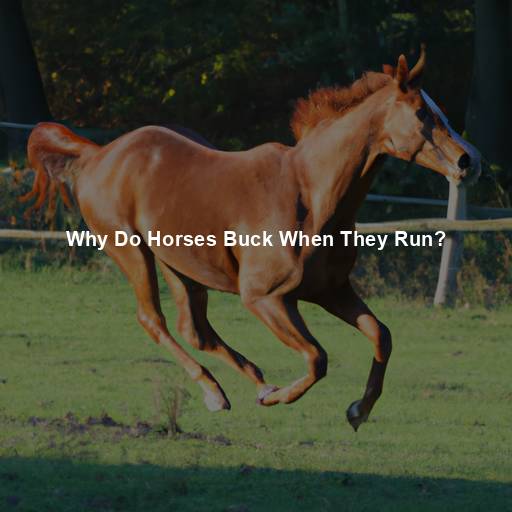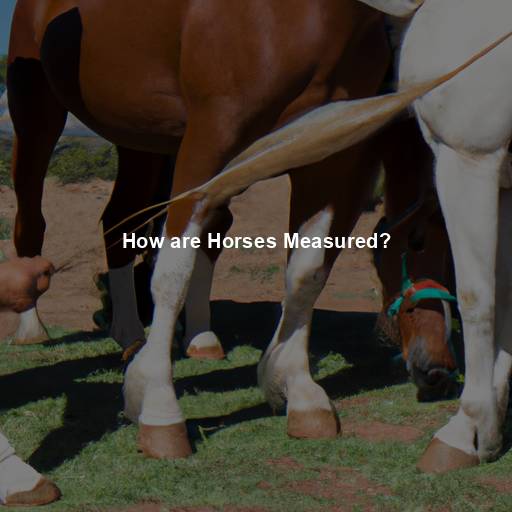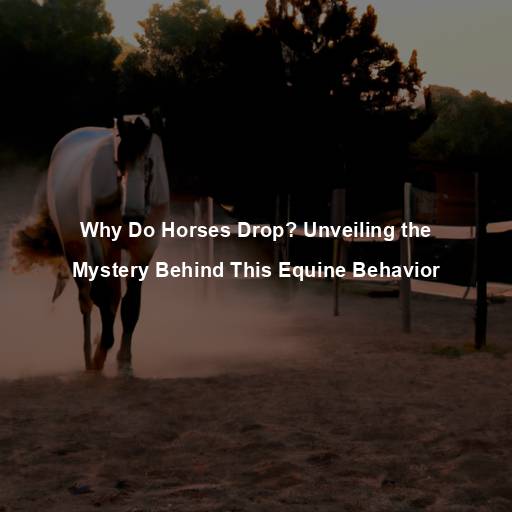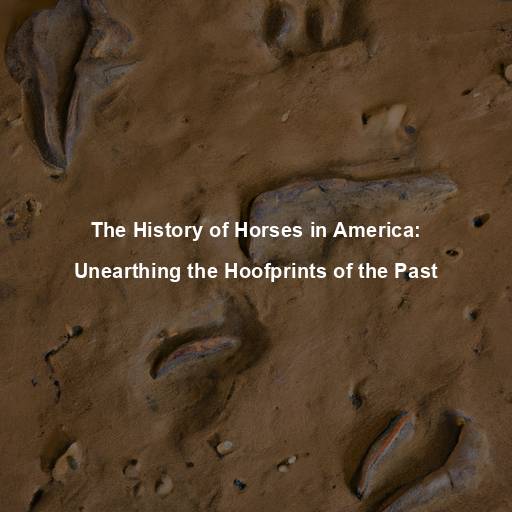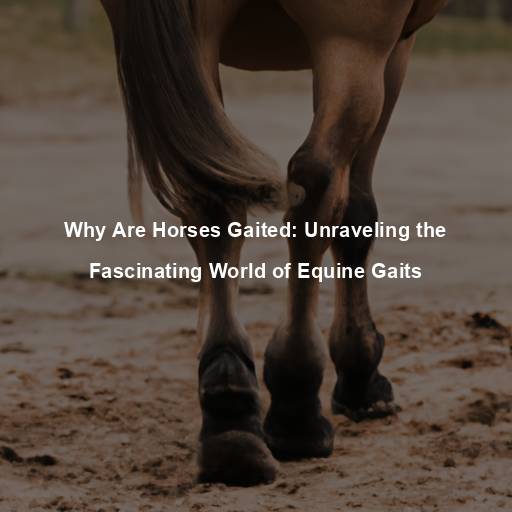Why Do Horses Buck When They Run?
Last Updated on November 15, 2023 by Evan
Contents
Understanding the Natural Behavior of Horses
Horses, with their captivating allure and marvel-inducing presence, embody an unparalleled blend of elegance, might, and celerity. It is their untamed, spirited essence that bewitches our minds and provokes insatiable curiosities. But amidst the mystique of these regal creatures lies a perplexing enigma – the enigmatic act of bucking whilst they gallop. This mind-boggling spectacle conjures a range of sentiments, from exhilaration to trepidation, and urges us to question the genesis of such a captivating display.
The Instinctual Nature of Horses
Throughout history, horses have adapted to their surroundings as prey animals, leading to natural behavior patterns that continue to puzzle and captivate us today. One such enigmatic behavior is bucking, a deeply ingrained instinct that is connected to their survival mechanisms. In the untamed wilderness, horses depend on their astonishing speed and remarkable agility to outsmart their predators. When faced with a perceived threat or sudden surprise, their reaction is instinctive – a quick burst of energy unleashed through thrilling bucks, serving both as a means of releasing tension and as a readiness drill for a swift getaway.
Establishing Hierarchy and Dominance
Horses, these fascinating social creatures, thrive within tightly-knit herds, abiding by an intricate web of dominance and submission. In their spirited exchanges, whether through playful antics or fierce bouts of competition, the display of bucking signifies far more than mere horseplay. It symbolizes a spirited power play where raw strength and resolute determination amalgamate, showcasing the relentless athleticism and unwavering resolve of these noble equines.
Physical Discomfort or Pain
Sometimes, a horse may buck when they run due to physical discomfort or pain. It is essential to recognize that horses, like any living beings, can experience discomfort or injury. If a horse is dealing with an underlying health issue, such as an improperly fitting saddle, a sore back, or a hoof problem, the discomfort can manifest itself in their behavior. Bucking may serve as a way for the horse to alleviate the discomfort or communicate their distress to their human counterparts.
Energetic Release and Playfulness
Just like any other animal, horses need to release excess energy and engage in playful behavior. Bucking can be a form of exuberance and joy, a way for horses to express their enthusiasm and let loose. It is akin to a child running and skipping with unbridled happiness. When horses feel energized and in high spirits, they may exhibit their exuberance through bucking, kicking, or leaping into the air.
Environmental Factors and External Stimuli
When horses hit the open road, it’s not just their internal drive that determines how they behave. A whole world of environmental factors and external stimuli can send their behavior for a spin. Think gusty winds, unexpected objects, and even the company of other animals. It’s a wild ride full of surprises, triggering some horses to unleash their inner bucking bronco.
The Importance of Proper Training and Understanding
While bucking is a natural behavior for horses, it is crucial for horse owners, trainers, and riders to establish a strong foundation of trust, respect, and communication with their equine companions. Proper training techniques and understanding of a horse’s behavior can help minimize unwanted bucking and ensure a safe and enjoyable experience for both horse and rider.
Building Trust and Confidence
In the realm of equine partnerships, trust reigns supreme. It is an ethereal dance of connection and understanding that can only be forged through unwavering dedication and tireless effort. With every patient stride and gentle nudge, horse owners and trainers lay the foundation for a bond built on unwavering confidence. This unspoken language of trust fosters an environment where horses feel at ease, diminishing the unruly shadow of excessive bucking that often looms over their journey in the arena.
Identifying and Addressing Pain or Discomfort
Taking care of your horse goes beyond just providing food and shelter. It’s important to schedule regular visits to the vet, where they can identify any hidden physical issues your equine companion might be dealing with. From making sure your horse’s saddle fits perfectly to maintaining healthy hooves, every aspect of their well-being should be carefully monitored. By doing so, you can prevent any discomfort that might lead to unruly bucking behavior.
Gradual Exposure and Positive Reinforcement
As equestrians, we understand the crucial significance of acclimating our beloved horses to unfamiliar surroundings. Slowly introducing them to new arenas and trails allows these majestic creatures to navigate the unexplored territories with ease. With a careful balance of gentle exposure to various stimuli and praise for their desired conduct, these noble beings can conquer their innate instinct to buck, gracefully triumphing over potential triggers.
Professional Guidance and Training
For horse owners and riders encountering persistent bucking issues, seeking professional guidance from experienced trainers can be immensely beneficial. A qualified trainer can assess the horse’s behavior, identify any underlying causes, and provide appropriate training techniques to address and modify the behavior effectively.
Breed Characteristics
Horses, in all their diverse splendor, possess a myriad of temperaments and physical traits that intertwine with their inclination to buck while galloping freely. We encounter the spirited Thoroughbreds and majestic Arabians, with their high-octane energy levels, emerging as prime contenders for displaying more frequent bouts of equine acrobatics. In contrast, the serene and untroubled Quarter Horses and the imposing Draft Horses grace us with their calm demeanor, often less inclined to embark on a bucking extravaganza during their moments of exercise or sheer playfulness.
Individual Temperament
When it comes to horses, there’s more than meets the eye. Each of these magnificent creatures has its own distinct personality and temperament, just like us humans. Take for instance the age-old act of bucking – while some horses may have a natural tendency to let loose and indulge in some rowdy exuberance, others might prefer to play it cool and keep their hooves firmly planted. By acknowledging and appreciating these individual quirks, equestrians can develop training approaches that speak to each horse’s unique needs, ensuring a harmonious partnership in the arena.
The Role of Training and Conditioning
Consistent and Progressive Training
The art of horse training holds the key to unlocking a majestic creature’s true potential, but the intricacies of this process are anything but ordinary. Within the horse-training realm, consistency and progression stand as pillars of success, paving the way for a harmonious bond between equine and trainer. Guided by their wisdom, trainers embark on a delicate journey, carefully revealing a symphony of exercises that mirror the exhilaration of galloping with grace. This transformative expedition grants horses not only physical prowess but also the mental fortitude to navigate their movements with finesse, silencing the disruptive echoes of bucking that may attempt to derail their stride.
Physical Conditioning
Adequate physical conditioning is vital for horses to perform at their best and minimize the risk of excessive bucking. Regular exercise and conditioning routines, such as lunging, longeing, or riding, help strengthen the horse’s muscles, improve cardiovascular fitness, and enhance overall athletic ability. Well-conditioned horses are less likely to experience fatigue or discomfort that could lead to bucking when running.
Positive Reinforcement and Rewards
Rewarding horses with treats, praise, or a gentle pat is a proven and powerful way to shape their behavior in a positive direction. By reinforcing desired actions and deterring unwanted ones, this approach creates a harmonious and motivated environment for both the horse and its trainer. In the context of exercise or running, acknowledging the horse’s appropriate responses with positive reinforcement further encourages them to maintain their focus and avoid exhibiting behaviors like bucking that hinder progress.
Addressing Potential Health Issues
Regular Veterinary Care
Ensuring that your horse receives regular veterinary care is an absolute must for ensuring their overall health and happiness. From routine check-ups to vaccinations, dental care, and parasite control, these practices are vital in detecting and treating any underlying health concerns that may lead to unexpected bucking behavior. By prioritizing your horse’s well-being, you are minimizing the chances of them experiencing discomfort or pain that could potentially trigger their bucking tendencies while in motion. So, let’s make their welfare a top priority and keep those bucks at bay!
Proper Saddle Fit
Ill-fitting saddles can cause significant discomfort and pain for horses, leading to bucking as a response. Ensuring that the saddle fits correctly and does not create pressure points or restrictions is crucial for the horse’s comfort and performance. Regular saddle checks and adjustments are necessary as a horse’s body shape can change over time.
Hoof Care
Healthy hooves are crucial for a horse’s overall well-being and soundness. Regular hoof care, including trimming and shoeing, helps maintain proper balance and prevents conditions that can cause discomfort or lameness. Neglected hooves can lead to pain and stiffness, potentially contributing to bucking when running.
The Impact of Rider Influence
Rider Skill and Balance
An inexperienced or unbalanced rider can inadvertently contribute to a horse’s bucking behavior when running. A rider’s seat, balance, and ability to maintain a consistent and supportive contact with the horse’s mouth are essential for clear communication and a harmonious partnership. Developing strong riding skills and seeking guidance from experienced instructors can help minimize the risk of unintentionally encouraging bucking behavior.
Fear and Tension
Horses are incredibly perceptive animals and can sense a rider’s emotions and body language. Fear, tension, or anxiety in a rider can transfer to the horse, potentially triggering a bucking response as a means of self-preservation. Riders should focus on maintaining a calm and confident demeanor, providing reassurance to the horse and promoting a relaxed atmosphere.
Clear Communication and Trust
Open and clear communication between horse and rider is crucial in establishing trust and understanding. Riders should use consistent cues and aids to communicate their intentions effectively. Building a strong bond with the horse through patient and respectful training practices helps foster trust, reducing the likelihood of bucking when running.
Embracing the Beauty of Horses’ Natural Behavior
Delving into the enigmatic world of equine behavior unravels the mystery behind the mesmerizing spectacle of horses bucking with an unbridled ardor as they gallop across open fields. It is through understanding the intricate dance between their ancestral instincts and the human- equestrian dynamic that we can truly fathom their raw magnificence. With each powerful buck, horses find solace in unraveling the tension of their physical being, forging intricate bonds within their equine society, and even communicating their emotions to astute observers. By embracing and respecting the enigma that is the equine spirit, enthusiasts can unlock a profound connection, fostering a thriving partnership that epitomizes the essence of harmony between beast and human.
As we delve deeper into the captivating realm of equine wonders, it is crucial to acknowledge the intricate tapestry that weaves together the enigmatic nature of horses. Their intricate behaviors, intricate behaviors, and resilient actions are a reflection of a myriad of factors, ranging from their innate instincts to their distinctive temperaments and the profound impact of their training and external stimuli. By embracing a sense of wonder, empathy, and unwavering dedication to their well-being, we can embark on a transformative journey that nurtures profound and unbreakable connections with these awe-inspiring creatures. So, when you behold the mesmerizing sight of a horse engaged in the dynamic act of bucking while running, allow yourself to be spellbound by the grandeur of their movements, which serves as a stunning testament to their untamed spirit and the profound kinship they forge with us humans.
FAQs: Why do horses buck when they run
Why do horses buck when they run?
The enigmatic nature of the equine realm encompasses a myriad of reasons why horses engage in the captivating act of bucking. This enthralling display is cloaked in an intricate tapestry of motives, serving as an outlet for an overflow of energy and elation. A symphony of exuberance and athleticism, bucking becomes a dance of playfulness, revealing the horse’s effervescent spirit. Moreover, it can also be a strategic maneuver, a declaration of dominance within their social dynamic, a battle for position amongst the equine brethren. Yet, lurking within the enigmatic depths, lie darker motivations, as fear, frustration, and discomfort can unravel the harmonious melody, coaxing these majestic creatures to buck in protest or pain, a testament to underlying distress or insufficient training and control.
Is bucking dangerous for riders?
Bucking can indeed be dangerous for riders, as it can lead to falls and injuries. When a horse bucks, it usually involves a combination of kicking both hind legs into the air while arching the back. This abrupt and forceful movement can be challenging for riders to anticipate and maintain balanced control. In some cases, riders can be thrown off-balance or completely off the horse, potentially resulting in serious harm. It is crucial for riders to wear appropriate safety equipment, receive proper training, and establish a trusting relationship with their horse to minimize the risks associated with bucking.
Can bucking be trained out of a horse?
Rest assured, taming the wild and rebellious nature of a horse, known as bucking, is indeed possible with the right approach. Don’t fret, this task requires the guidance of a seasoned equestrian expert who can delve into the root causes of this behavior. Assessing the horse’s physical well-being, addressing any potential sources of discomfort, and implementing tailored riding techniques are all crucial steps on this transformative journey. With consistency, unwavering patience, positive reinforcement, and effective communication, the bucking tendencies can be diminished or even eradicated altogether. However, it is important to keep in mind that some horses possess an innate sense of energy and playfulness, necessitating riders to stay alert and prepared at all times.
Is bucking a sign of a horse being unhappy or mistreated?
Bucking, as commonly believed, can indeed indicate a horse’s discontentment or mistreatment, yet this is not always the case. It is worth noting that horses may exhibit bucking behaviors as a protective response if they have been subjected to severe or abusive training techniques. To ensure the horse’s welfare, it is pivotal for riders and owners alike to create a nurturing and secure environment, provide suitable training regimens, and administer proper care. However, it is essential to recognize that bucking can also stem from individual temperament, excessive energy levels, or innate instincts. By being attuned to a horse’s nonverbal cues, scheduling regular veterinary check-ups, and demonstrating skilled horsemanship, one can identify and address any underlying factors contributing to bucking tendencies.
Can equipment like a bucking strap or a flank strap make a horse buck?
Equipment like a bucking strap or flank strap is often used in rodeo events to encourage a horse to buck more vigorously during performances. These straps are placed around the horse’s flank or hindquarters to provide a sensation of pressure, which can irritate the horse and cause them to buck in an attempt to rid themselves of the discomfort. It is important to note that using these types of equipment solely for training purposes outside of rodeo events can be controversial. When used correctly and sparingly, these devices can help redirect a horse’s energy during training sessions, but their misuse or prolonged use can result in stress, pain, and potential welfare issues. Therefore, it is advisable to consult with a professional trainer or equine expert before utilizing any such equipment.

